7 things to Do In and Around Hoi An
- Next Stage Travel
- Nov 15, 2022
- 10 min read
Updated: Aug 28, 2023
7 Things to do in and around Hoi An
Day trips and local finds for you!
1. Hoi An Old Town – shopping, exploring, biking.
Your hotel will likely have free bike rentals for you. We stayed in the Old Town. [If you don’t mind biking into town 10 min, or taking a Grab each day, we did see some lovely cheap lodging options in the Tra Que Vegetable Village (see below). The scenery there is pretty, though you won’t be centrally located.]
In the Old Town, nightly markets and LOADS of tourist-oriented venues are situated along the river. Here are the basic activities:
Join a traditional game. In the center of the Night Market there is a lively space where they do a game kind of like Bingo. If you don’t speak Vietnamese they will assign someone to help you. It’s 25K dong to play (US$1). You sit in a little bamboo hut. You hear traditional music as they draw each card.
Walk along the river. During the day, we found some good street food –Banh Beo–(see our food page for Hoi An) and at night the boats are very pretty with their colored lanterns. If you like, you can pay to ride in a boat, or float a candle in the water.
The nightly market shopping. It was not very interesting to us; every stall had the same 10 items and all pretty ordinary.
Night market food: “Hello Banana!!” is the greeting that the night market hawkers will invite you to buy their banana roti, hotdogs, and more. There were some things on skewers that were ok, and we did enjoy the Vietnamese pizza (banh trang nuong) but otherwise we avoided both the restaurants and the carts in the night market area. See our food page for ideas about great places to eat. If you are here for Western food, alcohol (at Western prices) or scenery over food quality, you can stop at any number of places.
Historical sites: During the day, various old houses, the Japanese bridge, some small museums are accessible with an old town ticket (60,000 dong for entry into 5 of 22 different possible locations; so only 12,000 dong per individual ticket). While the houses open for viewing are interesting enough and are actually lived in by families, you typically only get access to one or two rooms, maybe with a few photos and some placards describing historical events in that location. In other words, you won’t feel like you missed out by only visiting 5 of the 22 possible locations. But the tickets are cheap enough that you can easily visit everything.
Taking a pedicab: this is not something we did, but lots of other tourists seemed to enjoy it.
Shopping: see our page on Hoi An Shopping with prices. Buying custom clothes and leather goods is very popular here.
Get a massage: we used our hotel. It was great.
2. Tra Que / Vegetable Village
If you are staying near Hoi An Old Town, this is a short bike ride or Grab taxi for about 55K. We did a Grab, mapping to Baby Mustard Restaurant which is just at the intersection of the main road to the island and the road running along the rice fields.
We walked along the road with rice fields on one side and homes on the other and at the end of the road turned right into the center of town. There was a map at this location pointing in the direction of center. We enjoyed seeing all the farming, in neat rows, and with the houses facing in. There are ticket booths where you may be asked to pay for the right to wander about town. The first such booth had nobody monitoring it. When we crossed the next big road there was a larger booth with an attendant. Such pay-to-visit asks are part of responsible tourism. The fee is small and it helps the town maintain normalcy despite tourism. We were getting hungry though so turned around and walked basically back the direction we had come but alongside a different part of the water where we saw many ponds for fish and shrimp cultivation. If you are asked to pay at the first booth, it’s worth it to have this lovely walk and to support the locals. There are also cooking schools aplenty here and this would be a great location for such an activity.
Eventually, we came back to Baby Mustard Restaurant–which also runs a cooking school, but we just enjoyed the restaurant part. You can read more about the restaurant on our Hoi An food page.

lovely, neat fields in the vegetable village


3-5. Imperial City of Hue, Thien Mu Pagoda, and Tomb of Khải Định
We did a day trip of Imperial City + Thien Mu Pagoda + one tomb, booking a car and driver through our hotel. On the way to the Imperial City, our guide had us go through Da Nang, where we saw the Dragon Bridge, and up into the mountains past some great bay views, sandy beaches, and leper colony. The Dragon Bridge may be worth a visit if you are in the area on the weekend. The dragon’s head of the bridge spouts water and fire at specified times, but only on the weekends.
The Imperial City itself could take as long as you have time for. It is a massive complex, 2.5 km long. There are many buildings which are preserved, some under reconstruction, and some in disrepair–destroyed by American bombs during the war. Even with the destruction, there is plenty to see and it’s very interesting. The gardens have really not been touched and will someday make a great attraction if the government tries to reproduce what it once was, but as it is we still enjoyed visiting it.
After this visit we had lunch in Hue. Check out our Hoi An food page for details.
Then we headed to Thien Mu Pagoda. It was a fairly quick stop, had a good carved marble turtle and highly decorative guards. The visit is free. There used to be a gold Buddha in the pagoda, but our guide said the French took it and it lives in the Louvre. At the exit we bought some sweets for 20K. They were a mixture of peanuts and sugar. If that sounds good, you will probably like any of the versions offered.

Pagoda

Turtle and stele simliar to that at Temple of Literature

One of the guard statues – note the horsehair beard
We then drove to the Tomb of Khải Định. There are many tombs in this area and at the Imperial City you can buy a combo ticket to see several tombs and the City. As we were only here for the day, it would be too much to see more than one tomb, so we purchased tickets separately at each location. The Tomb of Khải Định is a great choice if you like art and architecture, especially 1920’s era. Khải Định was connected to the French court and the building itself is a mix of French, Viet, and Chinese influences. Khải Định started building this tomb before his death and it was finished after his death. There are photos on display of the funeral procession, as well as French ceramics. But the most interesting is the main vestibule with its highly decorated ceiling and walls, the view from each of the tomb’s levels, and the guard statues outside the tomb. Our guide told us that the artist who painted the ceiling did so with his feet, as a protest, but the king knew that the painter was the only one capable of the level of artistry he wanted, so he ignored the insult.
6-7. Day Trip to Ba Na Hills Sunworld and My Son Temple Complex
For this day trip, we figured we did not need a guide, so hired a driver only. We arranged through our hotel and that way our hotel staff could clarify the order of events (Ba Na Hills + take us to eat somewhere + My Son Temple). Though this gave us less control over the eating part we figured it would all be pretty much ok, which it was. Exchange text or WhatsApp numbers with your driver and contact them when you are done at the first stop. Plan to leave early, so you arrive at the park’s opening. We got to Sunworld about 8:30 am (Sunworld opens 8 AM). We were at the top about half an hour later (including a 20-minute gondola ride). The crowds on bus tours arrived at the top about 10:30. Don’t worry too much if the weather report says it will be cloudy (or clear); more on that below.
Ba Na Hills Sunworld is an amusement park. In our readings about it, others said it is full of what is foreign and interesting to Vietnamese people and we figured if nothing else this would be an interesting reason to visit. Of course, we also had seen The Golden Bridge in a scifi show (The Sandman) and that was a draw too. The other way to describe this park is a series of spaces designed for social media memories. Literally, everywhere you go there will be someone taking a carefully posed photo or video, sometimes in special outfits. The entry fee of about 850K dong (25K dong discount for buying tickets online) (USD$35) is pretty expensive by local standards; we were glad at the end of our visit that we came here, though.
Like any amusement park, there are lots of places to eat within the park for very high prices and with pretty limited choices. They did not check our bags on the way in so if you have strong food desires or want to save money, bring snacks or a full-on picnic with you.
We tried to book tickets online in advance with our credit card and it did not work. When we arrived and tried to pay with a card (or cash) there seemed to be far more confusion than necessary and they actually looked for our name on some list (and we were on the list because we tried and failed to reserve) and only then seemed to want to let us in to pay for the tickets. Based on this experience, we suggest you also try to book online in advance, even though it may fail, in case that list was somehow important. (Keep in mind we visited in low season and were there just after opening, so no crowds to fight and still it took about 15 minutes to have them sell us tickets.)
Once inside you take about 4 escalators up to the gondola station. When we were there (low season/November) only one of the 4 gondolas was running, which was not a problem. The park did not feel busy at all, especially in the early morning. The gondola trip is 17 minutes. If you are afraid of heights this will not be a pleasant ride. If you are not afraid of heights, it’s great. There is a huge waterfall, lots of trees, and on a cloudy day, the sensation of floating in the cloud.

Main entrance to Ba Na Sunhills. (bathrooms are on the far left, before entry)

one of many escalators to get to the gondola. Not crowded at 8:30 in Novemenber

one of many special views from the gondola
You exit the gondola into French Village. A mini “Notre Dame” is on your right. To the left is a circular building (under which are rides). To the far left is the entry to a second gondola ride to the Golden Hands Bridge. We knew we wanted to go there first, before the crowds. We had a very hard time finding our way however because there was so much fog that visibility was quite low, and the sign indicating “Golden Hands Bridge” was only set up in front of the entrance to the ride, and the map of the area is generally unhelpful.
This second gondola ride was much shorter, though long enough for us to eat the fish-shaped sweet cakes we bought in the food gauntlet on this gondola’s approach. The short walk on the Golden Hands Bridge is stunning. We took turns taking our photos as the clouds cleared and then closed in multiple times, as it rained and then stopped raining, as others posed and then left to allow us to pose. At the end of the bridge there are professional photographers who will take your picture for 50K, which we also took advantage of. If it’s raining or cloudy, just be patient. You are so high up here it will stop pretty soon.
Beyond the bridge are a series of gardens that we enjoyed. Again, all seemed set up to invite social media sharing. There is a constant soundtrack of (bad) French music. There is also a funicular in this area but it was closed when we visited. One of the gardens had a maze which was a good one because it made me feel like I was making choices about how to get out but really it’s impossible to get lost in it.
Back in the French Village we went into the building with the deep sea diver out front and discovered rides and movies for all ages. We had a good time on the ride pictured above. There is also a climbing wall here but nobody was running it while we were there. Again, low season and very few visitors when we came. Our timing also meant there were no flash mob style dancers entertaining us and the outdoor fantasy swing ride was not running in the rain. We’d recommend this trip for people of all ages. We spent 3 hours here and that was just right for us. If there are bigger crowds or you want to spend time eating here or going on more rides or seeing the movies they have, you might plan longer.
Three hours at Ba Na Hills meant we were ready for lunch when we left. Our driver drove us 60 min to the My Son Temple Complex, which are ruins from the 7th-13th centuries of the Champa people, similar to Angkor Wat (but way smaller). Just outside the main entrance for My Son there is a restaurant with mediocre food. It was good enough. My Son has a small museum after the ticketed entry which we found informative. Then there is an electric shuttle ride (included with admission) 2 km to the site. Here there are 2 more places serving food, though we didn’t check out how extensive the offerings were. The shuttle driver pointed us towards the trail; there is a map that directed us left to take a walking loop. If you have limited mobility or think you may not be able to do the whole loop, go to the right first which is the reverse of the suggested route. This has a completely flat paved road all the way to the largest cluster of buildings. Otherwise, the trail is mostly level though it was slippery even with our good hiking shoes. The buildings tend to be just up off the path, a short few stairs or ramp. Some buildings are in great shape, some under reconstruction, some falling down. There are also craters from the American-Vietnam war marked, and it is sad to see the destruction from the American efforts to these amazing ancient buildings. We learned a lot about the Champa culture and enjoyed seeing the temples, carvings, and nature they sit in. It was a very pleasant nature hike with architecture mixed in on an easy path.




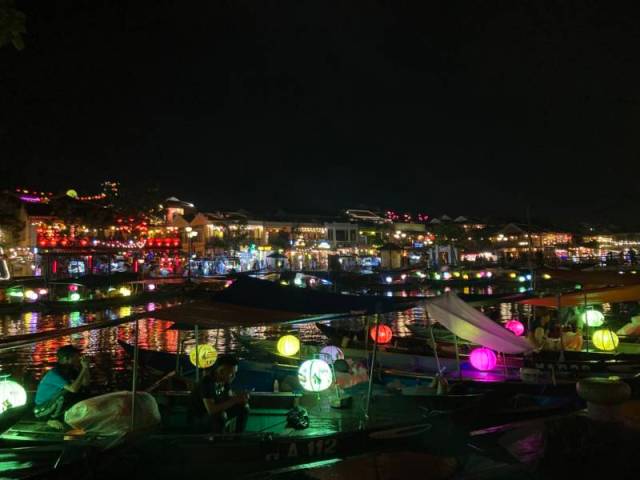














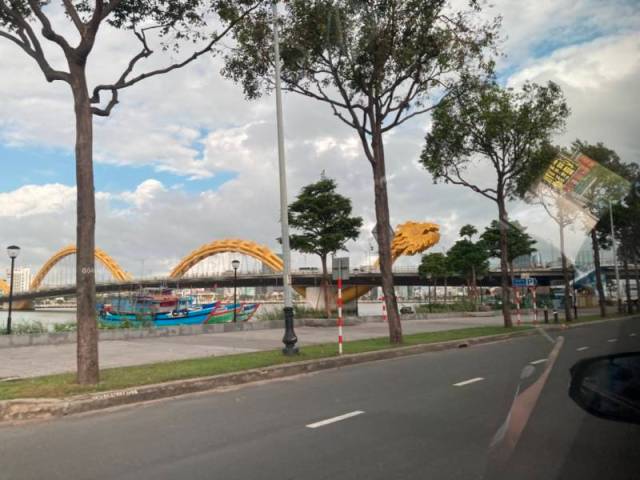





























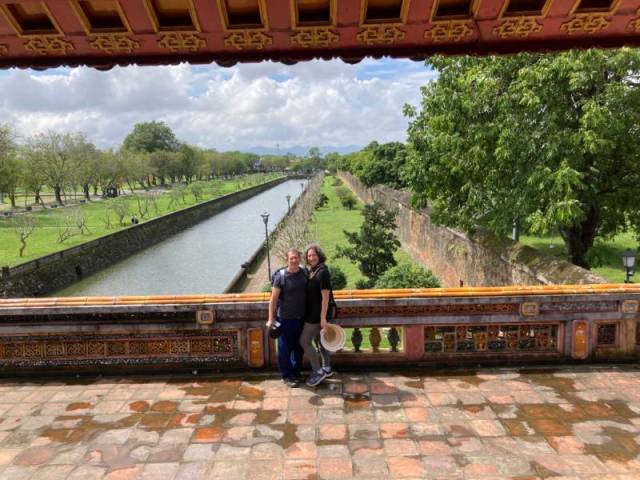



























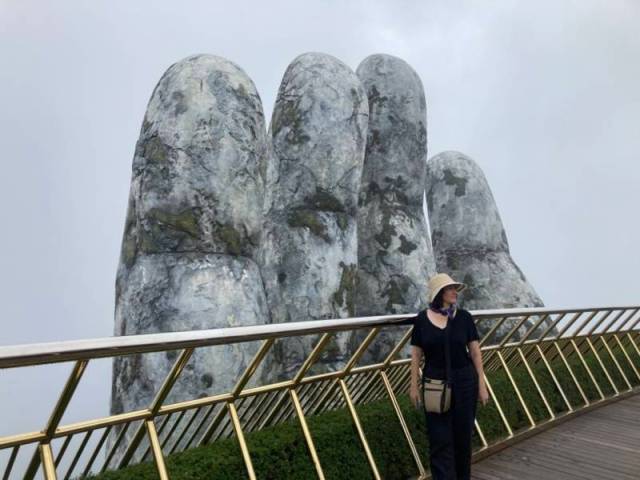





























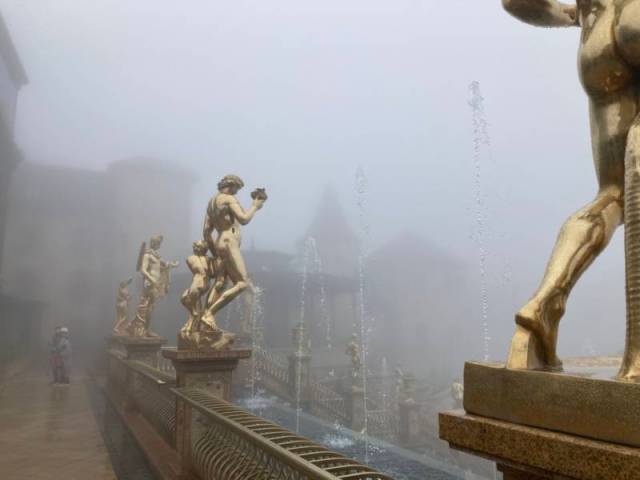






















Comments